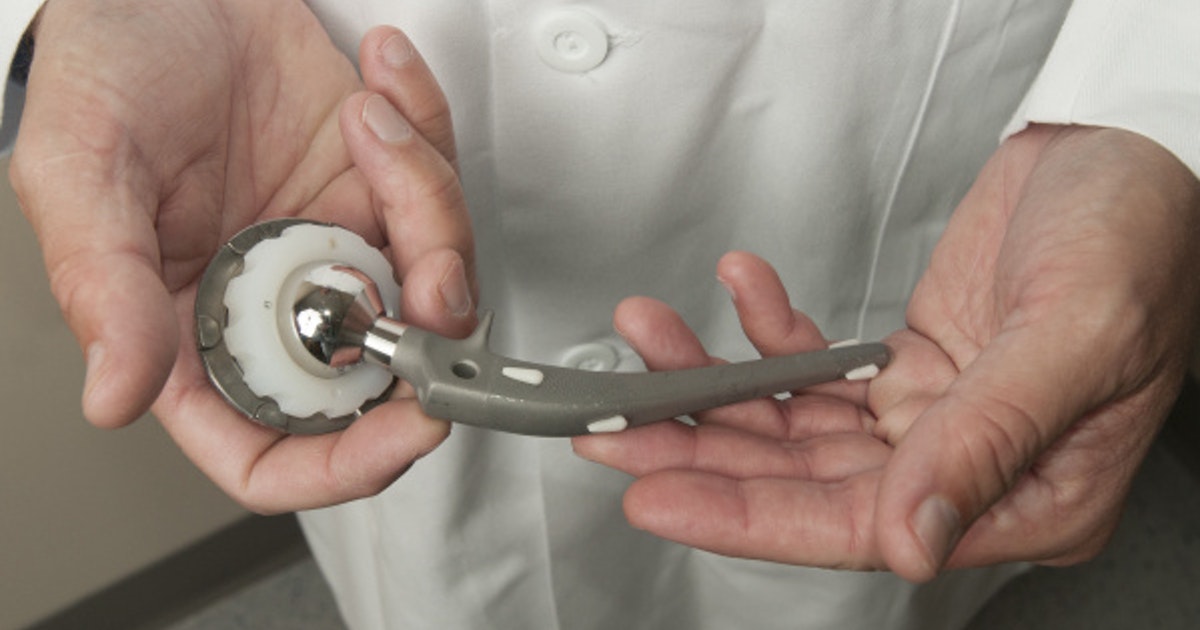Important Things To Consider Before Getting A Total Hip Replacement
Thanks to the wonders of modern science and medicine, people are living longer than they used to in the past. While this is good news for most individuals, one of the flip sides of the long life coin is that individuals’ joints can't always withstand all those extra years of use. Total hip replacements have become one of the most common surgeries for individuals over forty-five years of age. Even though these total hip replacements can offer the opportunity for many more years of pain-free active living, there are a number of things to take into consideration before undergoing a hip replacement.
Recovery Is Not Easy

Recovering from a total hip replacement is a long and grueling process involving physical therapy, bed rest, and medications. Many individuals who undergo total hip replacement are surprised at the length of the recovery period and just how difficult it is to get back up and walking again. Hip replacements involve cutting through muscle and bone in some of the most tissue-dense areas of the body, creating serious wounds that take a great deal of time to heal.
Lifestyle Changes Can Be Effective

Quick fixes have become incredibly popular in today’s fast-paced society, but just because a solution is easy to come by doesn’t make it the most practical one. Even though hip replacements can offer long-term relief for arthritis and other hip issues, this surgery shouldn’t be viewed as the only solution for hip-related problems. Sometimes, lifestyle changes can offer the same level of relief that a total hip replacement can - and without the risky surgery. Losing weight, increasing one’s level of physical activity, and even moving to warmer climates can sometimes relieve hip pain.
Every Surgery Has Risks

Anesthesia is not easy on the body. On top of that, hospitals have become notoriously plagued by antibiotic-resistant bacteria. Going under the knife for any reason involves facing a long series of risks that include life-threatening infections, paralysis, or even death. Individuals should consult with their doctor about the many risks involved before undergoing any major surgery.
Specific Risks And Complications Associated With Hip Replacement

Aside from the general risks associated with surgery, total hip replacements have their own unique set of complications. Hip replacements can cause permanent nerve damage in many individuals due to the proximity of the legs’ sciatic nerves to the bones which doctors remove during hip replacement. A small number of individuals are left with paralyzed or partially-paralyzed legs after total hip replacements. Hip replacements can also create leg length differences, limps, or spine issues in some patients.
Every Surgeon Is Different

There are a wide variety of techniques and approaches to conducting total hip replacement surgeries. Once an individual is told that they need a total hip replacement, they should consult with a wide variety of surgeons as possible. Every surgeon is different and brings their own unique touch towards these surgeries. Some individuals even fly to foreign countries for total replacements due to the success of a particular surgeon - or the lower cost of foreign health care.
There Are Many Types Of Artificial Hips

Hip replacements have come a long way since the first hip replacement surgery was conducted in 1962. While the very first artificial hips were constructed of heavy stainless steel, today’s hip replacements often use much more high-end materials such as titanium and Teflon. Today’s surgeons can even use 3D printers to create a custom hip prosthesis designed specifically for an individual’s body. Individuals considering total hip replacement should consult with their surgeons about all possible artificial hip technologies before deciding on one.
The Differences Between Prostheses

Besides the different types of hip replacements that a patient can receive based on their needs and the surgeon performing the surgery, another significant difference among prostheses is how they are affixed to the bone. For instance, there are cemented and cementless prostheses. Components of the prosthetic may be attached with bone cement, or it can be “cementless,” which allows the existing bone to grow into the prosthetic. Cementless is the most common technique used for primary and revision hip replacements in North America. Whether cemented or cementless prostheses (or a combination) is used largely depends on the surgeon’s preferences, as well as the patient’s lifestyle and physiology.
Post-Surgery Considerations

Although the road to recovery is a long, tedious, and challenging one, there are a few things patients will need to know once their surgery is over. For one, most hip replacement patients usually remain in the hospital for two to five days following their surgery, and patients who need extra care or do not have support at home may be transferred from the hospital to a rehabilitation center right away. Depending on the surgeon’s preference and surgical technique, the patient may also be given “hip precautions” to prevent their implant from dislocating or injuring the patient. These precautions generally include avoiding crossing the legs and no excessive rotating or bending of the hip for a minimum of six weeks. Special pillows that provide extra support and comfort for the patient and their new hip may be used as well, and the pillow is placed between the legs to avoid these positions.
Twenty-four hours after the surgery, fortunately, most patients are able to sit at the side of the bed and stand, and most are encouraged to walk with assistance as well. A nurse or physical therapist can teach individuals how to move safely while protecting the new hip as it heals. Individuals may also wear special compression socks and may be given blood-thinning medications to help reduce the chance of the patient developing blood clots in the legs.
Living With A Hip Replacement

After their initial recovery period, an individual should continue to practice healthy lifestyle choices, such as sticking to an exercise routine that helps to keep the hip muscles strong and flexible. Doctors often recommend low impact aerobic activities such as swimming, cycling, or walking. Even if the surgery is a success and recovery goes smoothly, a replacement hip is generally less flexible than a healthy, natural hip, of course. Although hip replacement surgery improves the patient’s quality of life, such as they are pain-free and are able to easily put on socks and shoes, some patients may still need a reaching tool to help them complete this simple task.
Other activities might even cause stress to the hip, such as sitting cross-legged on the floor, and a patient may not be able to comfortably do this again. Despite these few limitations, most individual’s expectations are met when it comes to living with their new hip. One research study discovered that more than eighty-seven percent of the expectations set by patients were met post-surgery. A staggering ninety percent of patients reported that their expectations were completely met when it came to eliminating medications, improving their ability to walk and move, improving their ability to work and participate in recreational activities, as well as relieving nighttime pain and inflammation.
